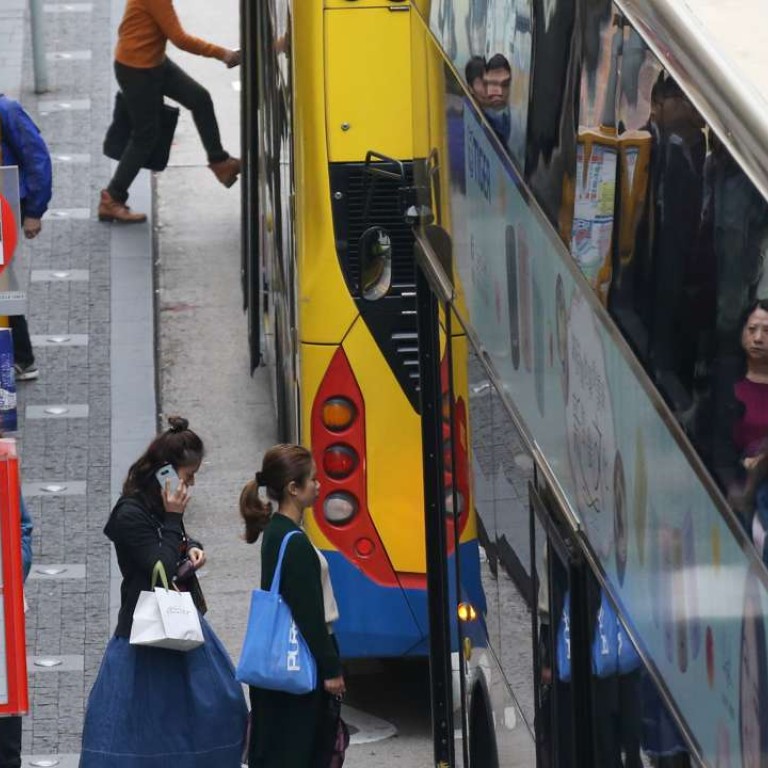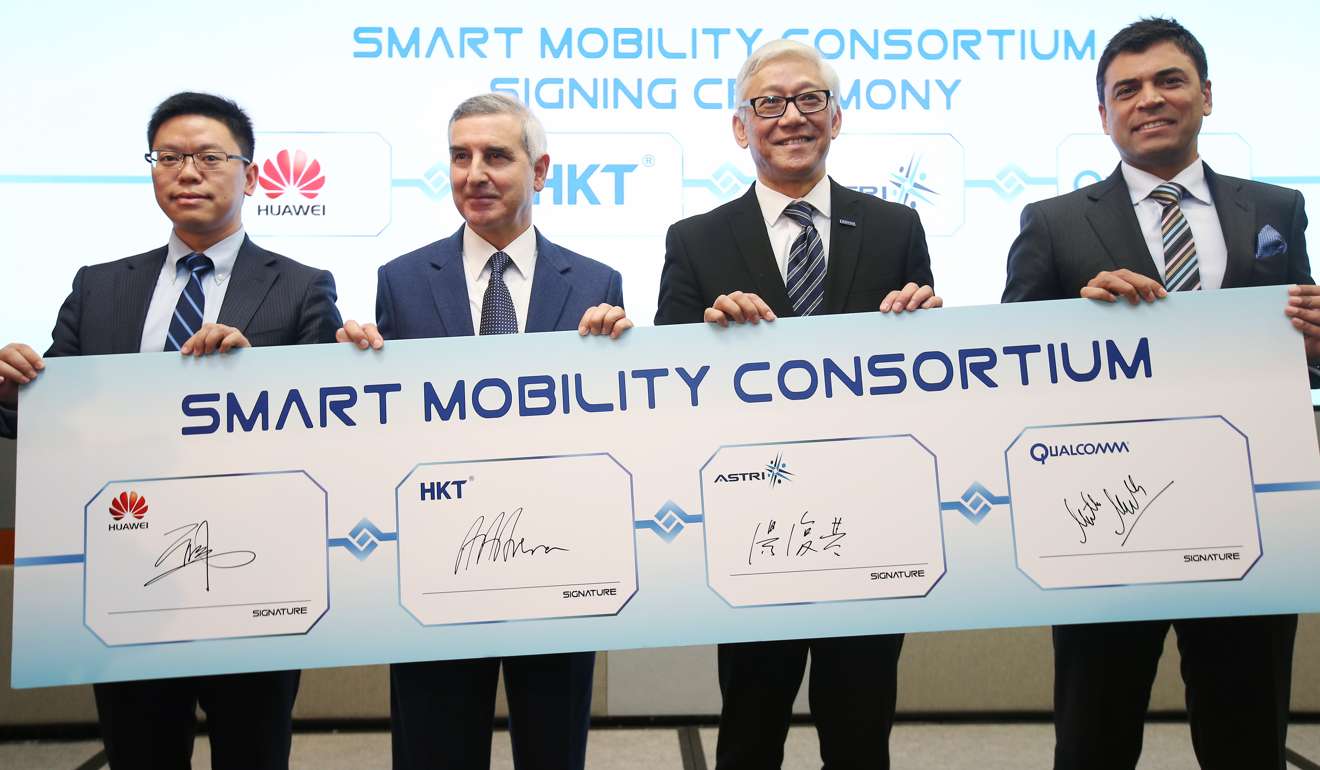
Smart driving system on its way to Hong Kong via Huawei, HKT and Qualcomm
Huawei, Qualcomm join HKT, Astri in rolling out new 'cellular-vehicle-to-everything' technologies to improve road safety, pave the way for autonomous driving
HKT, the city’s largest telecommunications network operator, and the Hong Kong government’s technology research arm plan to hit the road soon with a clutch of advanced technologies designed to help improve road safety and pave the way for autonomous driving.
“As one of the most connected cities in the world, Hong Kong is an ideal place to pioneer the implementation of a smart mobility system to transform urban transport using cellular-vehicle-to-everything, or C-V2X, technologies,” HKT group managing director Alex Arena said on Wednesday. “We want to go to trial [deployments] as fast as possible.”
HKT, the Hong Kong Applied Science and Technology Research Institute (Astri), telecommunications equipment supplier Huawei Technologies and mobile systems provider Qualcomm Technologies have formed the so-called Smart Mobility Consortium to take the lead in testing, studying and implementing C-V2X technologies in the city, following similar initiatives on the mainland, North America and Europe.
Using the city’s wide 4G mobile coverage, C-V2X technologies are supposed to enable vehicles to connect to the internet and communicate with other vehicles, pedestrians and the roadside infrastructure to achieve what Arena described as “cooperative awareness” in the transport system.
Technically, that would help motorists “see” around corners and through other vehicles to be alerted in advance of traffic conditions, predict the path of surrounding vehicles and have access to other relevant information that would support how future innovations like self-driving cars can be rolled out in Hong Kong, according to Peter Lam Wing-chap, the managing director of engineering at HKT.
More than 60 per cent of all road accidents in Hong Kong involve vehicle-to-vehicle or vehicle-to-pedestrian collisions, while more than 40 per cent of cyclist casualties involved accidents on or around carriageways, according to Transport Department data.

The department also found the most common contributors to traffic accidents included stationary or parked vehicles on busy roads, inappropriate changing of lanes, jaywalking by pedestrians and drivers losing control of their vehicles.
“Astri is developing state-of-the-art applications, platforms and prototypes which can benefit not just Hong Kong, but potentially other cities in this region,” said institute chairman Wong Ming-yam.
The Smart Mobility Consortium’s pilot roll-out of C-V2X technologies, however, would need close cooperation with the government to allow the installation of cellular base stations on public roadside infrastructure, such as street lamp posts and traffic light poles, and get allocation of the 5.9-gigahertz spectrum band over which the V-C2X technologies would operate.
Frank Tong Fuk-kay, the chief executive at Astri, said the consortium intends to undertake testing over the next 18 months, while engaging with the automotive industry, various government agencies and other interested parties.
The city’s other 4G mobile network operators, such as Hutchison Telecommunications Hong Kong and SmarTone Telecommunications, are also expected to join the C-V2X ecosystem.

